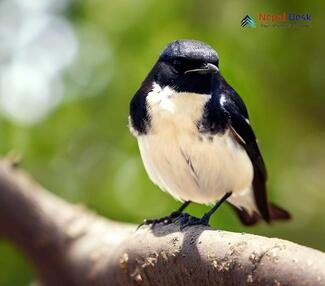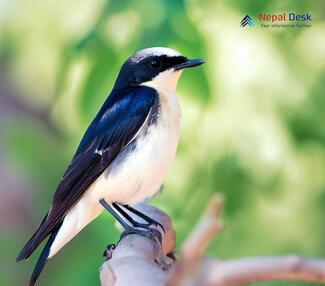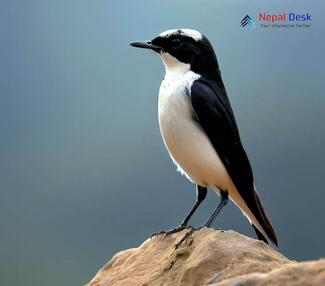The Variable Wheatear (Oenanthe picata) is a small, distinctive bird that has captured the fascination of many wildlife enthusiasts and ornithologists. This elusive species belongs to the family Muscicapidae and holds a special presence in Nepal, where it can be found in select habitats. In this article, we will explore all the essential details about the Variable Wheatear, as well as its occurrence within the diverse landscapes of Nepal.
Characteristics
The Variable Wheatear boasts a unique appearance that sets it apart from other Wheatear species. Males exhibit striking black-and-white plumage, while females don a more muted gray coloration. Both male and female birds have a distinct white patch on their wings, which becomes apparent when they take flight or engage in display behaviors.
Measuring between 14 and 16 centimeters in length, this petite bird typically weighs between 22 and 32 grams. Its slender build grants it agility and grace as it flits through diverse terrains in search of food.
A Dynamic Diet
The diet of the Variable Wheatear is omnivorous, consisting mainly of insects such as ants, beetles, and caterpillars. On occasion, these birds will also consume seeds and bits of fruit. Their efficient foraging technique involves hopping on the ground, pecking at potential prey items, or extracting insects from foliage with their slender beaks.
Habitats & Distribution
Variable Wheatears are predominantly found throughout India, Iran, Pakistan, Afghanistan, Mongolia, Central Asia, and Nepal. They typically inhabit open grasslands, cultivated fields, dry rocky areas with sparse vegetation, or foothills with stony outcrops. As they favor an arid environment, they generally avoid dense forests and wetlands.
Presence in Nepal
In Nepal, the Variable Wheatear gravitates to the western region, where it can be spotted around arid landscapes. Prime birdwatching destinations include Humla, Mugu, Dolpo, Mustang, Manang, and Jumla districts. They can be observed between March and November, with the peak breeding season in Nepal occurring in June and July.
Threats & Protective Measures
Although the Variable Wheatear is not currently classified as endangered or vulnerable, its populations have experienced periodic declines over the years due to habitat loss and degradation. Protecting key habitats for this species is crucial in ensuring their survival throughout Nepal and beyond. Conservation organizations should work closely with local communities to promote sustainable land use practices that can benefit both people and wildlife like the Variable Wheatear.
Final Thoughts
The enchanting Variable Wheatear is emblematic of the rich biodiversity found within Nepal's landscapes. Their resilience against harsh environments, striking appearance, and intricate behaviors make them a captivating species to observe. By learning more about these delicate birds and striving to protect their fragile habitats, we can forge meaningful connections with the natural world around us.




